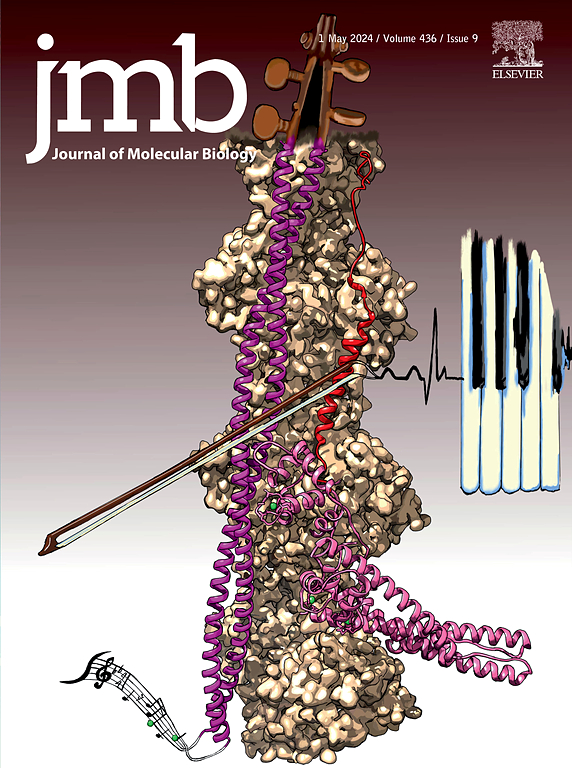BindUP-Alpha: A Webserver for Predicting DNA-and RNA-binding Proteins based on Experimental and Computational Structural Models☆
IF 4.5
2区 生物学
Q1 BIOCHEMISTRY & MOLECULAR BIOLOGY
引用次数: 0
Abstract
Structural data provides important information on the proteins’ function. Recent development of advanced machine learning and artificial intelligence tools, such as AlphaFold, have led to an explosion of predicted protein structures. However, many of the computed protein models contain unstructured and disordered regions, posing challenges in protein function characterization. Here we present BindUP-Alpha, an upgraded webserver for predicting nucleic acid binding proteins. Our structure-based algorithm utilizes the electrostatic features of the protein surface and other physiochemical and structural properties extracted from the protein sequence. Using a Support Vector Machine (SVM) learning approach, BindUP-Alpha successfully predicts DNA- and RNA-binding proteins from both experimentally solved structures and predicted models. In addition, BindUP-Alpha identifies electrostatic patches on the protein’s surface that represent potential nucleic-acid binding interfaces. BindUP-Alpha is freely accessible at https://bindup.technion.ac.il, providing interactive three-dimensional visualizations and downloadable text-based results.

BindUP-Alpha:一个基于实验和计算结构模型预测DNA和rna结合蛋白的web服务器。
结构数据提供了蛋白质功能的重要信息。最近先进的机器学习和人工智能工具(如AlphaFold)的发展,导致了预测蛋白质结构的爆炸式增长。然而,许多计算的蛋白质模型包含非结构化和无序区域,这对蛋白质功能表征提出了挑战。在这里,我们提出了BindUP-Alpha,一个升级的预测核酸结合蛋白的web服务器。我们的基于结构的算法利用了蛋白质表面的静电特征以及从蛋白质序列中提取的其他物理化学和结构特性。利用支持向量机(SVM)学习方法,BindUP-Alpha成功地从实验解决的结构和预测模型中预测DNA和rna结合蛋白。此外,BindUP-Alpha还能识别蛋白质表面上代表潜在核酸结合界面的静电斑块。BindUP-Alpha可在https://bindup.technion.ac.il免费访问,提供交互式三维可视化和可下载的基于文本的结果。
本文章由计算机程序翻译,如有差异,请以英文原文为准。
求助全文
约1分钟内获得全文
求助全文
来源期刊

Journal of Molecular Biology
生物-生化与分子生物学
CiteScore
11.30
自引率
1.80%
发文量
412
审稿时长
28 days
期刊介绍:
Journal of Molecular Biology (JMB) provides high quality, comprehensive and broad coverage in all areas of molecular biology. The journal publishes original scientific research papers that provide mechanistic and functional insights and report a significant advance to the field. The journal encourages the submission of multidisciplinary studies that use complementary experimental and computational approaches to address challenging biological questions.
Research areas include but are not limited to: Biomolecular interactions, signaling networks, systems biology; Cell cycle, cell growth, cell differentiation; Cell death, autophagy; Cell signaling and regulation; Chemical biology; Computational biology, in combination with experimental studies; DNA replication, repair, and recombination; Development, regenerative biology, mechanistic and functional studies of stem cells; Epigenetics, chromatin structure and function; Gene expression; Membrane processes, cell surface proteins and cell-cell interactions; Methodological advances, both experimental and theoretical, including databases; Microbiology, virology, and interactions with the host or environment; Microbiota mechanistic and functional studies; Nuclear organization; Post-translational modifications, proteomics; Processing and function of biologically important macromolecules and complexes; Molecular basis of disease; RNA processing, structure and functions of non-coding RNAs, transcription; Sorting, spatiotemporal organization, trafficking; Structural biology; Synthetic biology; Translation, protein folding, chaperones, protein degradation and quality control.
 求助内容:
求助内容: 应助结果提醒方式:
应助结果提醒方式:


